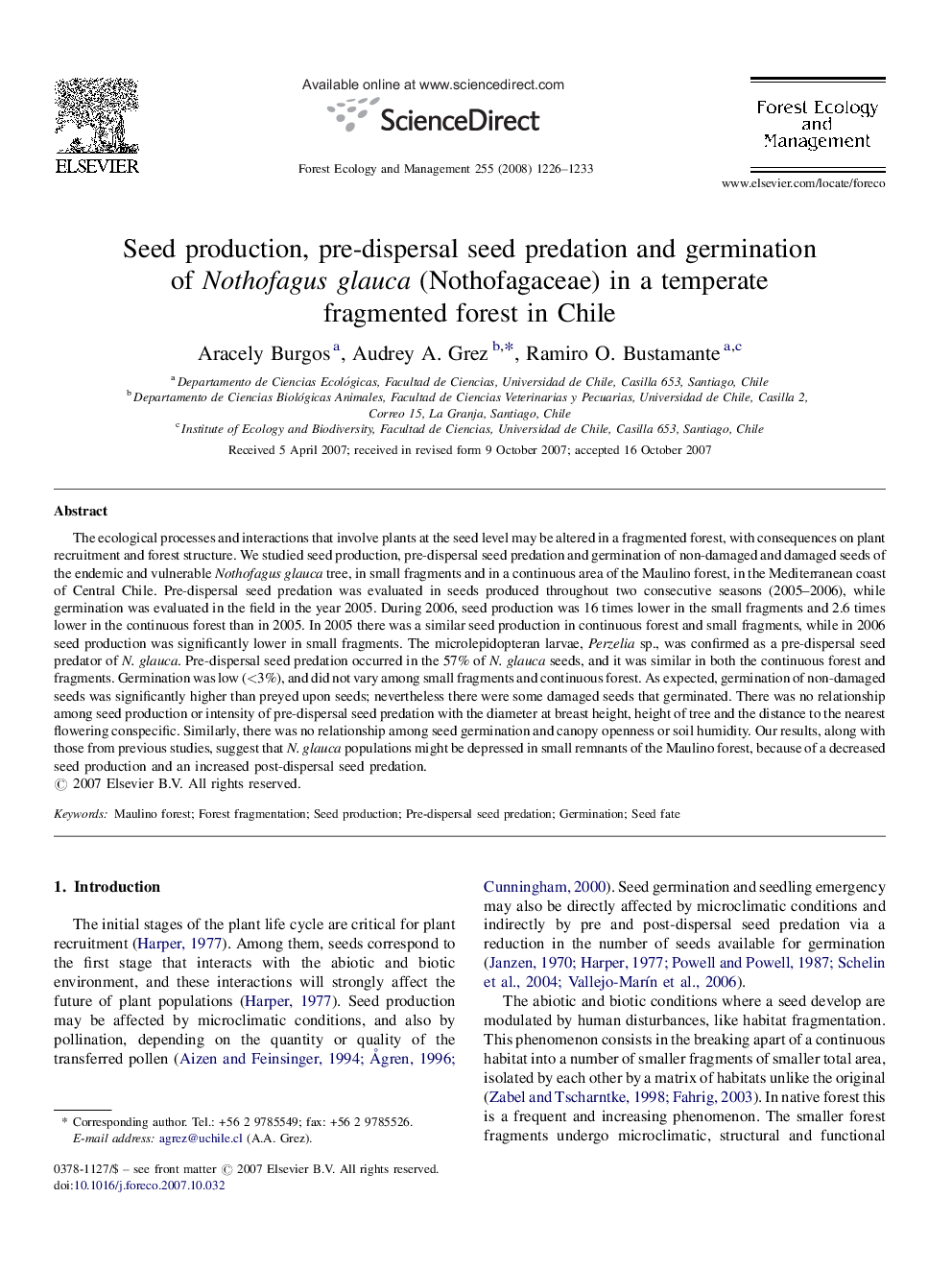| Article ID | Journal | Published Year | Pages | File Type |
|---|---|---|---|---|
| 89901 | Forest Ecology and Management | 2008 | 8 Pages |
The ecological processes and interactions that involve plants at the seed level may be altered in a fragmented forest, with consequences on plant recruitment and forest structure. We studied seed production, pre-dispersal seed predation and germination of non-damaged and damaged seeds of the endemic and vulnerable Nothofagus glauca tree, in small fragments and in a continuous area of the Maulino forest, in the Mediterranean coast of Central Chile. Pre-dispersal seed predation was evaluated in seeds produced throughout two consecutive seasons (2005–2006), while germination was evaluated in the field in the year 2005. During 2006, seed production was 16 times lower in the small fragments and 2.6 times lower in the continuous forest than in 2005. In 2005 there was a similar seed production in continuous forest and small fragments, while in 2006 seed production was significantly lower in small fragments. The microlepidopteran larvae, Perzelia sp., was confirmed as a pre-dispersal seed predator of N. glauca. Pre-dispersal seed predation occurred in the 57% of N. glauca seeds, and it was similar in both the continuous forest and fragments. Germination was low (<3%), and did not vary among small fragments and continuous forest. As expected, germination of non-damaged seeds was significantly higher than preyed upon seeds; nevertheless there were some damaged seeds that germinated. There was no relationship among seed production or intensity of pre-dispersal seed predation with the diameter at breast height, height of tree and the distance to the nearest flowering conspecific. Similarly, there was no relationship among seed germination and canopy openness or soil humidity. Our results, along with those from previous studies, suggest that N. glauca populations might be depressed in small remnants of the Maulino forest, because of a decreased seed production and an increased post-dispersal seed predation.
